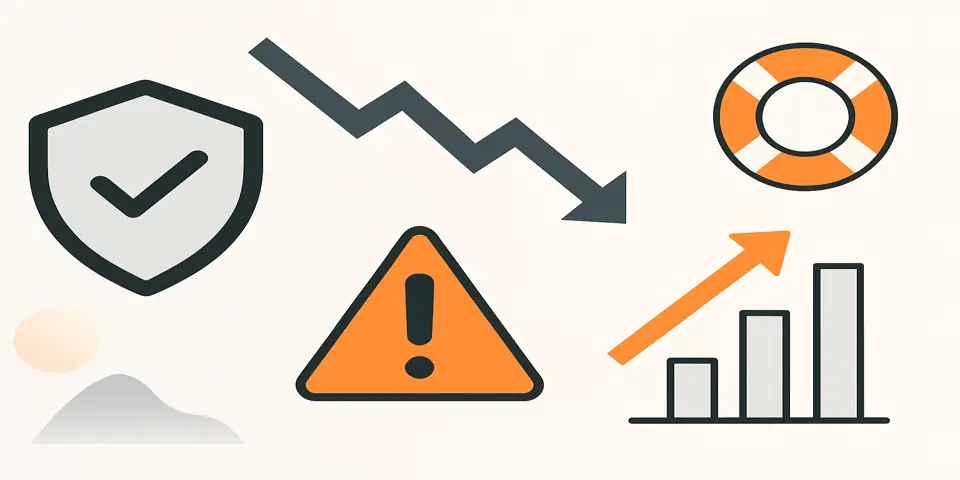15 Min To Navigate Crises With Strategic Marketing Plans
Introduction
Crisis management begins with preparation—imagine waking up to a social media storm that’s obliterating your brand’s reputation overnight. For many business owners, this is not just a nightmare but a harsh reality that can hit anytime, making brand reputation management essential. Brand crises are inevitable, but how you manage them defines your brand’s future, and brand reputation management plays a central role in this process
Table of Contents
. In this blog, we’re diving into the art of navigating brand crises through proven brand reputation management techniques, offering you actionable, field-tested strategies to not only weather the storm but emerge stronger. Whether you’re steering an SME over USD 20,000 in monthly revenue or crafting a digital presence, brand reputation management insights will arm you with the resilience your business needs. A proactive brand reputation management approach isn’t optional—it’s your brand’s lifeline.

Understanding the Anatomy of a Brand Crisis
Every business, big or small, faces a potential crisis. It could stem from a product failure, a social media backlash, or even a global pandemic. A sound understanding of what constitutes a crisis is the first step to navigating it effectively.
What is a Brand Crisis?
A brand crisis is a critical, unexpected event that threatens to harm an organization or its stakeholders. Such crises can wreak havoc on a company’s reputation, impact customer trust, and ultimately affect the bottom line.
Why SMEs Are Vulnerable
Small and medium enterprises often find themselves in a precarious position during crises due to limited resources and lack of comprehensive brand reputation management plans. Facing financial constraints, a crisis without brand reputation management can quickly escalate if not handled promptly and effectively. This makes brand reputation management strategies more vital than ever. A solid brand reputation management approach helps SMEs mitigate long-term damage. Without structured brand reputation management, recovery becomes costly and chaotic. Investing in brand reputation management safeguards trust and continuity. Ultimately, brand reputation management is the shield every SME needs when navigating uncertainty.
1. Identify the Crisis Early
Importance of Early Detection
Spotting the signs of a crisis early can mitigate damage and give you a head-start in managing the situation. This is especially crucial for businesses that rely heavily on their reputation for ongoing success and revenue.

Tools and Techniques for Early Detection
- Social Listening Tools: Utilize tools like Hootsuite and Mention to monitor brand mentions across digital platforms and spot potential issues before they escalate.
- Constant Feedback Loop: Encourage open communication lines with your customers and employees. For example, at SySpree, feedback is gold. It not only improves our services but also acts as an early warning system.
2. Create a Crisis Management Plan
Components of a Crisis Management Plan
A well-outlined crisis management plan is your guiding light through turbulent times. Essential components include:
- Dedicated Crisis Management Team: Assemble a team responsible for crisis management. This should include members from relevant departments like PR, legal, and executive leadership.
- Detailed Communication Plan: Chart out internal and external communication strategies. Consistent messaging is key to maintaining trust.
Building Your Crisis Team
Your crisis team should include individuals whose roles align with possible areas of impact. Think of communication experts, customer relationship managers, and even IT specialists. SySpree, for instance, emphasizes cross-functional teams that can handle diverse issues seamlessly.

3. Transparent Communication and Engagement
Value of Honest Communication
Transparent, honest communication during a crisis builds credibility and trust. Here’s why it’s vital:
- Maintains Customer Trust: Transparent communication prevents misinformation and reassures clients.
- Controls Narrative: By addressing the crisis head-on, you can control the narrative, which is often crucial in shaping public perception.
Effective Channels for Communication
- Press Releases: Issue timely press statements detailing the issue and your action plan.
- Direct Customer Engagement: Use email newsletters or personalized messages to keep your most loyal customers informed.
4. Leverage Digital Platforms for Crisis Management
SySpree’s Digital Marketing Expertise
Harnessing digital platforms for efficient crisis management is crucial. SySpree’s expertise in digital marketing ensures your brand’s message reaches the right audience, even amidst a crisis:
- Social Media Marketing: Use active social media channels not only to address concerns but also to gather real-time feedback.
- Content Marketing: Provide valuable content that positions your brand as an informed and responsive entity.

5. Learn from the Crisis
Post-Crisis Analysis
Once the storm has passed, it’s essential to assess what happened and why. This understanding is invaluable for future preparedness:
- Conduct a Post-Mortem: Analyze what went wrong, what was done right, and where you can improve.
- Feedback Integration: Take feedback from stakeholders to refine your crisis management strategies.
Case Study: Real-World Application
Consider a mid-sized tech company facing a backlash over a software glitch. By identifying the glitch early and assembling a crisis team, the company not only managed to patch the error swiftly but also communicated openly with users. This transparency turned a potential disaster into an opportunity to bolster client trust. Similarly, SySpree has enabled several SMEs to navigate digital challenges with customized solutions, reinforcing their online reputations.
Internal and External Resources for Continuous Improvement
Regularly updating your crisis management plans and keeping abreast of industry trends is vital. Utilize internal resources like SySpree’s comprehensive digital marketing services and stay informed with external resources such as industry reports and updates from authoritative websites like HubSpot and Entrepreneur.

Conclusion
Crises are an inevitable part of business life, but they don’t have to be defining moments of failure. With the right tools, a proactive approach, and lessons from industry leaders, like SySpree, your business can navigate brand crises gracefully and emerge stronger. Remember, every crisis also presents a chance for growth and improvement.
Are you prepared for your next brand crisis? Let SySpree be your partner in crafting an unshakable reputation. Contact us today for a free consultation, and take the first step towards fortifying your business against potential upheavals.
Other blogs you might like –





Somebody essentially lend a hand to make significantly articles Id state That is the very first time I frequented your website page and up to now I surprised with the research you made to make this actual submit amazing Wonderful task